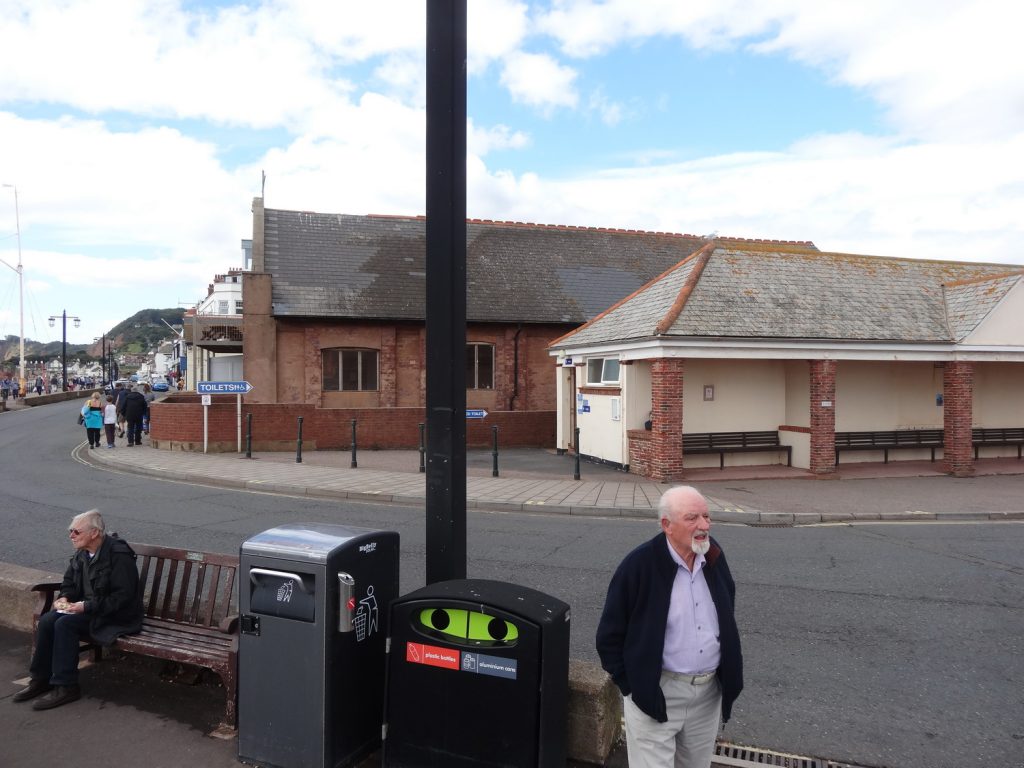Recent exterior photographs show why many dismiss the Drill Hall and think the space it occupies could be better used.
There is no doubt that the Drill Hall looks awful at the moment, but it is not only the Drill Hall which stops the Port Royal area being attractive. This area is a mix of unattractive styles which spectacularly fail to live up to the beautiful architecture in most of Sidmouth.

The relatively recent Trinity Court flats on the west corner of Ham lane opposite the Lifeboat Station give a nod to Sidmouth architecture but are unsubtle and not wearing well. The Lifeboat Station is an inoffensive seaside style but the Sailing Club to its east is an awful example of 60s/70s utilitarian architecture, it is functional but not at all attractive. A building which works to refute the early 20th century dictum that if you design properly for function the outcome will of necessity also be beautiful.



The signage, bins and street furniture are also not in keeping with a ‘Regency Resort’.
As mentioned elsewhere the shelter and toilet which can be seen on the right of the hall, although quite attractive in themselves if they had been properly maintained, make the Drill Hall a very unattractive venue as no-one wants to look out on to the back of some toilets. Their presence makes it very difficult for the hall to be hired out.
It should also be noted that when the Drill Hall was built the land-level to its east was approximately 7-10 feet lower. Raising the height of the Esplanade has been good for sea defenses but has taken little account of the effect on the buildings which already existed nor the concept of a town-scape.
In these two versions made from a photograph dating from between 1903 and 1905 you can see how much different the area was at that time. The house next to the Drill Hall was East Cliffe House, a sixteen roomed house, home to the owner of the Gas Works which is behind it to the north. In the version where the background has been blurred it is easier to identify items such as the hand cart next to the lower floor and the street lamp on the right which help to judge scale. Understanding the original proportions of the building help with reading the images of it as it is now. The current Esplanade is at the level of the balcony.


The recent exterior photographs, below, of the space between the Drill Hall and the Esplanade show that the ground level has risen and the arches have become partly buried. This appears to be accidental as opposed to intentional and so should be fairly easy to dig out if required. The lower arches were mainly filled by wooden doors in the early hall, as can be seen on another old photograph on this site. They have now been filled up with a combination of brick and breeze block.





Other exterior openings have been blocked too.


The first of these is under the west window on the front of the building and the other is on the rear. They were presumably additional entrances to the lower floor.
At the front of the Drill Hall the building is separated from the Esplanade by a gap which is bridged to the front doors. Given the land levels at the time it was built such a bridge is likely to have been an original feature.
At the rear the land falls away but still appears to be higher than at the time of construction as the headroom at the bottom of the stairs now seems low.



The round window is original and opened by swivelling on an horizontal axis, as seen in a photograph from around the 1950s.
Other remaining details include the roof beams under the roof overhang.


The ridge tiles for the roof are still there on the north end, but have been partially replaced or are still missing on the south end which may account for water damage in the upper room.


The red Bracknell bricks have stood up very well to 120 years of gales although their surface has worn off in many cases.


All in all a great deal remains of an originally fine building, although it may be difficult to isolate such details within its overwhelmingly forlorn appearance.

